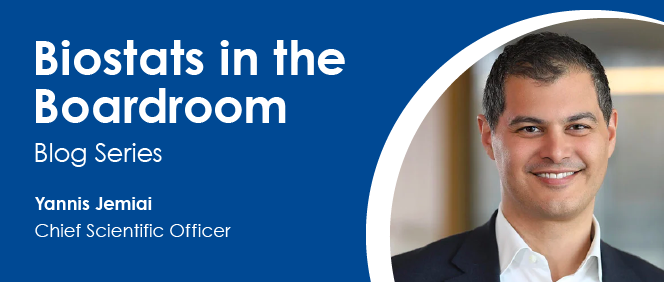
Recently, Cytel co-founder Professor Cyrus Mehta noted that, “Clinical trial design selection is too much like an art, and not enough like a science.” The ad hoc nature of some clinical trial selection processes, raise concerns about whether or not the optimal clinical trial has been chosen for a sponsor’s specific needs. Oftentimes, this means that sponsors cannot be confident in their designs, and sometimes leave millions of dollars on the table because more valuable design options were overlooked.
The new science of the re-imagined clinical trial makes trial selection more scientific by quantifying resource allocation and prioritization of commercial objectives, and then making data-driven clinical trial selection which provides a strong sense of opportunity costs. Continue reading below to learn about the science of clinical trial selection.
The Current Method of Trial Selection
Executive teams generally have a sense of how they want a clinical trial to look – an adaptive design with an option for sample size re-estimation, or an enrichment design with multiple arms – and a clinical trial is built and refined on these intuitions with no way to determine whether there are better options that look completely different when encountered through initial speculation. This means that options that are unconsidered for design, are never evaluated for properties such as speed, cost and other forms of commercial viability.
Cytel’s new Solara software offers sponsors a slightly different option. The ability to simulate millions of different options within a matter of minutes, means that all opportunities are candidates for exploration. Instead of exploring via intuitions and hypotheses, principles of optimization from economic theory are integrated into Solara to facilitate trial selection within an ecosystem of choices.
The New Science of Trial Selection
The new science of trial selection rests on quantifying the following three processes:
- Aligning on Priorities
- Identifying Optimal Designs
- Selecting with (Data-Driven) Confidence
For example, suppose a sponsor is limited by a set number of resources, or needs to complete a clinical trial within a certain amount of time in order to remain competitive. Solara enables sponsors to explore millions of clinical trials that reflect these limitations. Yet to do this effectively, sponsors need to make a conscious decision about what their priorities are in terms of clinical trial outcomes, and often this requires knowledge of which outcomes are in fact possible. There is therefore a chicken and egg problem.
Solara therefore uses visualization tools, to offer sponsors a full layout of the land. A number of options are provided, and sponsors can then explore which options align with their priorities. Once priorities are set, Solara crafts an individualized scoring rule that ranks options in accordance with sponsor priorities.
Click on the button to learn more.

About Yannis Jemiai
 Yannis Jemiai has a pivotal role within Cytel as Chief Scientific Officer he has oversight for the corporate-level Scientific Agenda which includes establishing research portfolios in Bayesian, small sample, and other flexible designs; as well as complex innovative designs including adaptive trials, master protocols and MAMS. Yannis also has an extensive portfolio of research in adaptive trial design, financial and pharmaceutical strategy, decision theory, and regulatory affairs.
Yannis Jemiai has a pivotal role within Cytel as Chief Scientific Officer he has oversight for the corporate-level Scientific Agenda which includes establishing research portfolios in Bayesian, small sample, and other flexible designs; as well as complex innovative designs including adaptive trials, master protocols and MAMS. Yannis also has an extensive portfolio of research in adaptive trial design, financial and pharmaceutical strategy, decision theory, and regulatory affairs.
His own research has been published in numerous statistical journals. Dr. Jemiai earned his Ph.D. from Harvard University, an M.P.H. from Columbia University, and a B.A. in Molecular and Cellular Biology also from Harvard.





 Yannis Jemiai has a pivotal role within Cytel as Chief Scientific Officer he has oversight for the corporate-level Scientific Agenda which includes establishing research portfolios in Bayesian, small sample, and other flexible designs; as well as complex innovative designs including adaptive trials, master protocols and MAMS. Yannis also has an extensive portfolio of research in adaptive trial design, financial and pharmaceutical strategy, decision theory, and regulatory affairs.
Yannis Jemiai has a pivotal role within Cytel as Chief Scientific Officer he has oversight for the corporate-level Scientific Agenda which includes establishing research portfolios in Bayesian, small sample, and other flexible designs; as well as complex innovative designs including adaptive trials, master protocols and MAMS. Yannis also has an extensive portfolio of research in adaptive trial design, financial and pharmaceutical strategy, decision theory, and regulatory affairs.